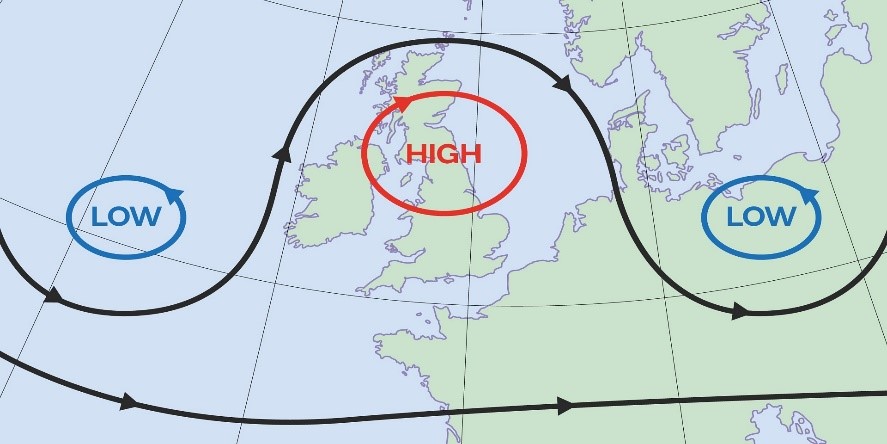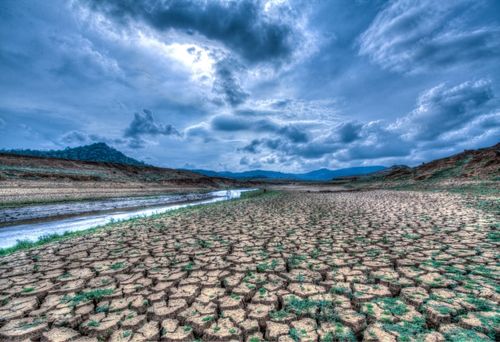The summer of 2022 will be remembered for several reasons in the UK – the Queen’s Platinum Jubilee, historic inflation rates and rising cost of living, the UK government crisis, chaos at airports as the travel industry struggles to cope up with pent up demand, and so on. However, one thing that will not be forgotten in a hurry, albeit for the wrong reasons, is the severe heatwave that has engulfed most parts of Europe this summer.
Heatwaves are not an uncommon phenomenon in Europe – a heatwave in 2003 reportedly led to 70,000 deaths[1], then another struck the continent in 2006 breaking several temperature records[2], which were again broken in 2018[3] and 2019[4]. However, what’s alarming about the current European heatwave is its severity, duration, and reach. The heatwave of 2022 has engulfed most parts of Central, Southern, and Western Europe. Temperatures have been raging for weeks in Spain, Portugal, and France causing forest fires that have resulted in the destruction of thousands of hectares of forests and an incalculable loss of property and life. In Italy, a glacier on the mountain of Marmolada collapsed on July 4th, killing seven people[5]. The collapse was attributed to abnormally warm temperatures in the region for that time of the year. For the first time in history, the Met Office issued a Red Extreme Heat warning for July 18th and 19th as temperatures reportedly soared to more than 40°C in parts of the UK[6].
Europe is not the only region experiencing extreme temperatures this year. Japan witnessed its worst ever heatwave, with Tokyo registering temperatures of more than 35°C for five consecutive days for the first time[7]. In India, heatwaves are common during the summer, but summer began early this year with high temperatures from March when the first heatwave arrived[8]. Average temperatures in March were the highest since temperature records began in India 122 years ago.
So, what exactly is a heatwave?
Typically, a heatwave is declared when the temperature in a region is predicted to exceed the pre-ordained limit set for heatwaves for an extended period. In the UK, a heatwave threshold is met when a location records a period of at least three consecutive days with daily maximum temperatures meeting or exceeding the heatwave temperature threshold.
What typically causes a heatwave?
Heatwaves are normally attributed to changes in the jet stream, a band of strong winds around 5 to 7 miles above the Earth’s surface blowing from west to east. Jet streams are formed as a result of the interaction between air flowing from the Earth’s poles to the equator due to temperature difference and the Earth’s rotation. In winter, there is a bigger temperature difference between the equator and poles, so the jet stream is stronger and flows over the UK. The reverse is true in summer, where there tends to be a smaller temperature difference. The position of the jet stream typically ends up to the north of the UK resulting in calmer, drier weather.
Heatwaves occur when the jetstream assumes the shape of the Greek letter omega forming what are known as omega-blocks. These omega-blocks remain nearly stationary and distort the usual eastward progression of pressure systems resulting in a high-pressure air system that can persist over an area for a prolonged period[9].
In juxtaposition with omega-blocks, other atmospheric phenomena such as ‘cut-off lows’ can also occur. Cut-off lows are regions of low air pressure that get separated or ‘cut-off’ from the main jet stream. Because of their lower pressure, they attract hot air from warmer regions (such as North Africa and Iberia in the case of this year’s European heatwave) and act as a conduit for pumping hot air north-wards.

What’s causing this year’s heatwaves?
Currently, a global pattern of five omega-blocks is circling the world, leading to simultaneous heatwaves across continents. This pattern is known as ‘wavenumber 5’. According to Stephen Belcher, chief scientist at the Met Office, three factors contributed to the heatwave over Europe: the wavenumber 5 pattern in the jet stream; the increase in global average temperatures; and the dry soils, particularly around the Mediterranean, resulting from protracted hot weather[10]. When there is some moisture in the soil, some of the sun’s energy evaporates the water, leading to a slight cooling effect. But when the soil is already very dry, there is little left to evaporate and thus, more of the sun’s energy bakes the surface, adding to the heat.
Is climate change to blame?
Due to climate change, average temperature difference between the equator and the poles has reduced resulting in a weaker jet stream. This has increased the likelihood of formation of omega-blocks and cut-off lows. Furthermore, a study commissioned by the UK Met Office into the heatwave of summer 2018 showed that human-induced climate change made the 2018 record-breaking UK summer temperatures about 30 times more likely[11]. 2018 was the equal-warmest summer for the UK in a series from 1910, along with 2006, 2003 and 1976. Similarly, a rapid analysis conducted by an international team of climate scientists at the World Weather Attribution initiative has shown that the unusually early heatwave which struck India and Pakistan in March and April this year was made at least 30 times more likely by human-caused climate change[12].
Periods of intense heat do occur within natural weather patterns, but scientists say that globally they are becoming more frequent, more intense, and are lasting longer as a result of global warming. A growing body of research is trying to answer the question of how exactly the jet stream is being changed by global warming and what this means for future weather patterns.
What’s the impact of heatwaves?
Heatwaves lead to a variety of negative impacts on human health & productivity, agriculture, and the environment.
As stated earlier, heatwaves can lead to excess deaths in vulnerable populations from heat strokes and other heat-related illnesses. Heatwaves in European countries, wherein homes are typically designed to trap heat inside and not the other way round, result in people getting poor quality sleep during the night. This leads to reduced productivity during the day not just for outdoor workers but also for those working in air-conditioned offices. In fact, according to a paper published in Nature Communications, the heatwaves of 2003, 2010, 2015 and 2018 in Europe caused damages totalling 0.3 to 0.5% of GDP across the continent, and up to 2% percent of GDP in southern regions[13].

Heatwaves can have devastating effects on crop yields, especially on those crops that require lower day-time temperatures. It is estimated that almost 15 to 35% of the wheat crop in states close to Delhi – Punjab, Haryana, and Uttar Pradesh, India’s “wheat bowl” – was damaged by this year’s heatwave, worsening the global food crisis triggered by the Russian invasion of Ukraine[14]. By exacerbating droughts and wildfire, heatwaves accentuate their negative impact on agriculture. Heatwaves can also result in heat stress in cattle, thereby lowering their productivity.
Heatwaves increase the demand for cooling which puts stress on an already strained electricity system. And if the excess electricity required for meeting the increased cooling demand is generated from fossil fuels, it results in more emissions creating a vicious cycle of heating – cooling demand – more emissions.
As with the impacts of climate change, the detrimental effects of heatwaves are experienced worse by people in developing countries. In these low-income countries, the livelihoods of millions require them to work outdoors – in fields, at construction sites, on the streets, and so on – subjecting them to the worst climatic conditions caused by heatwaves. Furthermore, these people typically do not have access to cooling systems in their homes, which aggravates their dire living conditions.
So, what can be done?
Some adaptation measures can be taken to avoid the worse effects of heatwaves such as painting buildings white to increase their reflectivity, creating green spaces in urban areas, and using heat-resistant materials for constructing buildings, transport networks, and other critical infrastructure. However, these are all band-aid solutions, and real change can be brought about only by reducing emissions and meeting the targets of the Paris Agreement. Unless citizens hold their governments accountable for climate action and make their voices heard, heatwaves will, unfortunately, become an unwelcome and regular part of the eagerly awaited summer in the developed world.
Businesses need to play their part too. By taking concrete steps to achieve net zero emissions, not just scope 1 and 2 but scope 3 as well, in a time-bound and transparent manner, businesses can do their bit in tackling the biggest challenge of our time. As the strongest economic force, businesses are responsible for the majority of spending, wealth creation, and investment. Where business goes, others will follow – and this applies to climate action too.
[1] https://en.wikipedia.org/wiki/2003_European_heat_wave
[2] https://en.wikipedia.org/wiki/2006_European_heat_wave
[3] https://en.wikipedia.org/wiki/2018_European_heat_wave
[4] https://en.wikipedia.org/wiki/2019_European_heat_waves
[5] https://www.bbc.co.uk/news/world-europe-62029780
[6] https://www.metoffice.gov.uk/about-us/press-office/news/weather-and-climate/2022/red-extreme-heat-warning
[7] https://www.bbc.co.uk/news/world-asia-61976937
[8] https://www.bbc.co.uk/news/world-asia-india-61242341
[9] https://www.metoffice.gov.uk/weather/learn-about/weather/how-weather-works/high-and-low-pressure/blocks
[10] https://www.ft.com/content/bb9ecca3-c914-489d-af7d-06df6010d1ea
[11] https://www.metoffice.gov.uk/about-us/press-office/news/weather-and-climate/2018/2018-uk-summer-heatwave
[12] https://www.carbonbrief.org/climate-change-made-india-and-pakistans-2022-early-heatwave-30-times-more-likely%EF%BF%BC/
[13] https://www.nature.com/articles/s41467-021-26050-z
[14] https://www.theguardian.com/world/2022/jun/18/burning-planet-why-are-the-worlds-heatwaves-getting-more-intense
Sagun Tripathi (MBA 2023) worked for more than eight years in the energy sector, across different geographies – the US, Germany, and India – and functions – R&D, consulting, strategy, and operations – before coming to LBS. He is passionate about climate action and how sustainable energy holds the power to transform lives in the developing world.
The Wheeler Institute is seeking to understand, illuminate and offer solutions to the challenges faced by the developing world, with an aim to identify the role of business in addressing these challenges and a focus on the implications and actions for those in developing countries. In support of our students, we approach this blog section as a reflective platform and a space where individuals can generate debate as long term agents of positive change.
